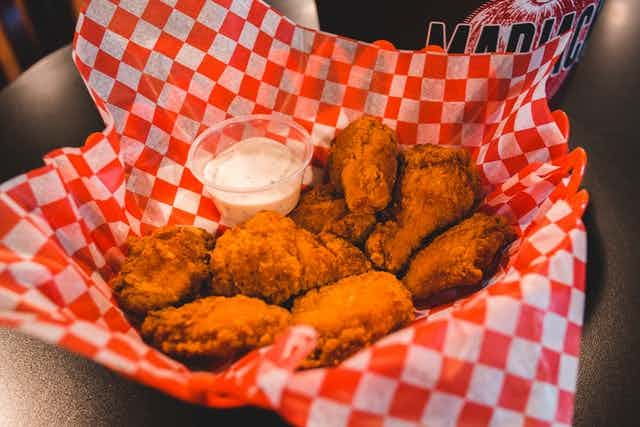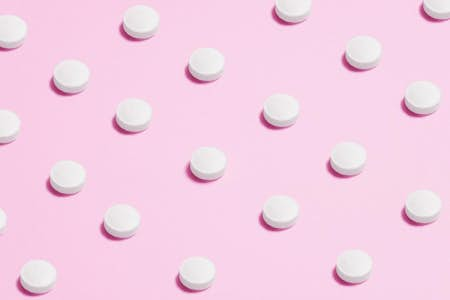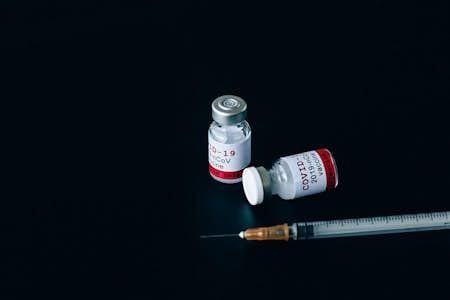Want to really feel like 40 at 50, or even at 60 or 70? You can, so long as you improve your diet!
For many, the 50s mark the coming of middle age. Our bodies can still be fit and healthy way beyond 50, as is proven by older athletes, professional sportspeople, marathon runners and weightlifters.
Whether you're looking for the latest vitamins and supplements, want to stock up on over the counter medication, or are looking for a digital solution for your regular prescription, our providers have you covered. Compare brands below and click on your favourite to shop their best offers now!
In fact, more people are competing in professional sports beyond their 40s, 50s and beyond.
Take a look at 60-year-old pro basketball player Jim Sweeney, 69-year-old pro BMX rider Kittie Weston-Knauer, 56-year-old pro swimmer Caroline Adams Miller and Fauja Singh, a remarkable 100-year-old man that completed the Toronto marathon in 8 hours, 25 minutes and 17 seconds!
This is far from a complete selection of super-fit over-50-year-old professional athletes and sportspeople. The proof is out there - you can be over 50 and as fit as a fiddle.
Of course, we can’t deny that it takes work to be fit in your 50s, but by taking a few practical steps to improve your diet and general health, you will get there.
Here, we’ll be discussing foods to avoid after 50.
Your diet at 50
Throughout life, we often find that our tolerance to certain foods decreases. The colossal fry-ups you might have relished as a young man or woman might wreck your stomach for hours, or you might find that just a few pints or glasses of wine sends you over the edge.
Fatty and carb-rich foods become harder to process as we age, mainly because our metabolism slows down and our stomachs and internal organs become less tolerant to overeating.
According to WebMD, the body also stores more fat and loses muscle post-50 due to hormonal changes. Our cells become less adept at burning fat and tend to hold it instead.
This is why both men and women are more vulnerable to weight gain post-50.
Women are potentially more at risk due to estrogen loss after menopause.
Daily calorie intake for the over-50s
According to most sources, over-50s should cut their daily caloric intake by some 200 calories on average. This varies depending on gender, height, muscle mass and activity level.
According to Very Well Fit, the average daily calorie limits for the over-50s are:
Calorie limits for women over age 50
| Activity Level | Daily Calorie Requirement |
| Not physically active | 1,600 calories/day |
| Somewhat active | 1,800 calories/day |
| Active lifestyle | 2,000-2,200 calories/day |
Calorie needs for men over age 50
| Activity Level | Daily Calorie Requirement |
| Not physically active | 2,000 calories/day |
| Somewhat active | 2,200–2,400 calories/day |
| Active lifestyle | 2,400-2,800 calories/day |
Muscle loss with age
A slowing metabolism isn’t the only consideration for the over-50s. Muscle loss (sarcopenia) begins to accelerate to some 3% to 5% of muscle loss per year on average.
Harvard Health says that age-related muscle loss is a significant risk factor for fractures from falls. After menopause, women lose both muscle and bone (osteoporosis), which both drastically increases the risk of low-impact fractures.
Muscle loss is another consideration for an over-50s diet that should incorporate more protein and B-vitamins at the expense of processed carbs.
Most over-50s food choices should focus on lowering carb and fat intake whilst bolstering protein, fibre and nutrient consumption.
Also, don’t forget the role of exercise. Check out our article on exercise routines for over-50s and read up on the top 5 fitness subscription services here.
Without further ado, let’s look at four specific foods to avoid after 50.
Foods to avoid after 50
1. Refined and processed foods
This is the big one. Refined and processed foods are the number #1 food to reduce at any age.
Refined and processed foods typically contain a high percentage of:
- Sugar
- Salt
- Saturated fats
- Additives like preservatives and colourants
After 50, refined and processed foods become even harder to process and digest. The calories contained within processed foods are pretty much destined to become fat.
Processed foods also contain high concentrations of salt and have low nutrient content.
Processed foods have been linked to a dizzying selection of health problems ranging from high blood pressure to stroke, heart disease, impaired cognitive function, poor digestive health and reduced immune system function.
The BMJ also found that ultra-processed foods drastically increase the risk of certain types of cancer.
So what counts as processed foods, or worse, as ultra-processed foods?
The BMJ included a startlingly wide range of foods in their study. Some ultra-processed foods included mass-produced packaged bread and buns, sweet and savoury packaged snacks, confectionery and dessert, sodas, drinks and processed meats, such as chicken nuggets. Processed drinks also include many types of juice, especially those labelled as ‘juice drink’ rather than fruit juice.
Foods with coloured or fried coatings were also classed as ‘ultra-processed.’ Pretty much anything that comes out of a long-life sealed packet is processed in some way, but typical ‘junk foods’ are by far the worst contenders.
The BMJ repeatedly found processed foods to be devoid of any nutritional value, instead packed with processed fat, carbs, salt and additives like nitrates.
Cutting down processed foods should be the first priority for anyone looking to improve their diet
When you pass 50, cutting down processed foods and swapping them out for raw or unprocessed foods is a huge change that could drastically improve your general health.
This doesn’t have to be complicated. Whilst some choose to go all the way with their processed food cull, even cutting out foods like olive oil and processed teas, you don’t need to take a highly restrictive approach to see returns on your efforts!
Replace processed foods with:
- Raw or unprocessed food.
- Fresh fruit and veg.
- Nuts, seeds, oats, grains, legumes, and herbs.
- Health foods. Matcha, green tea, hemp seeds, chia, and maca are all superb options.
Do make sure that you watch your nut, seeds and oats consumption - whilst these choices are generally healthy, they’re also dense in fats.
Unprocessed desserts and treats include dark chocolates, nuts and berries. Keep your eye out for foods made with whole or raw ingredients. Alternatives to conventional deserts might include cereal bars and other whole oat desserts, whole milk additive-free low sugar ice cream (in modest portions) and deserts with high cocoa and low sugar content. Always check the packaging to make sure a product’s nutritional content backs up any health claims.
Keep processed meats to a minimum; swap salami and other cooked meats with plain ham, for example, and swap nuggets and chicken steaks for chicken breast or thighs. Better yet, cut meat drastically or cut it out altogether, focusing on swapping red meat for white meat.
If you’re serious about changing your diet, try committing to vegetarianism or veganism for at least 2 to 3 days a week, too.
Dr Joanne McCormack from Fat is my Friend told Health Times: "Stick to real food. If it needs a label it is probably ultra-processed. Less than 3 ingredients is a good rule of thumb. Avoid snacking, as most snacks are ultra-processed."
2. Alcohol
Over-consumption of alcohol becomes riskier the older we get.
It isn’t just the hangovers that get worse as we age; the adverse health effects of alcohol also become worse!
Over-consumption of alcohol causes liver damage, and for over-50s, it increases the risk of household accidents and falls. The National Institute of Aging says that alcohol is involved in some 40% of burns and accidents and that the risk of drinking-related accidents also increases with age.
Our balance tends to worsen as we age, and this mixes poorly with alcohol. The body metabolises alcohol more slowly too, so we essentially stay drunk for longer.
Alcohol is also highly calorific. A can of beer or glass of wine isn’t much better than a can of soda or chocolate bar.
It’s handy to recap the recommended safe drinking limits, currently 14 units weekly for men and women.
14 units are equal to:
- 6 pints of beer or cider (4% strength)
- 6 medium (175ml) glass of wine (13% strength)
- 12 glasses (25ml) spirits such as gin or vodka (40% strength)
The weekly limit can be misleading. Binge drinking on one night at the weekend followed by steady drinking throughout the week can put you well over the weekly 14 unit limit.
In reality, 14 units are generally considered too high for many older people.
But isn’t alcohol in moderation good for you?
Most people will remember reports on alcohol consumption (particularly red wine and beer) that speculated how moderate drinking was potentially good for heart health.
We’re some years on from those reports now - studies in this area indicate that the positives of drinking are minimal and only apply to a small demographic of people. The BHF says that alcohol is strongly linked to adverse health outcomes for virtually everyone. Don’t fool yourself into thinking your red wine and beer consumption is good for you!
3. ‘Low-fat foods’
Why cut out ‘low-fat foods’?
Because these often compensate by adding more sugar.
This scientific study confirmed that low-fat foods were often laden with more sugar than their standard counterparts.
If you look carefully at low-fat alternatives to yoghurts, cereal, ice cream and other foods marked as ‘low-fat’, then you’ll likely notice that they’re certainly not lacking in sugar.
This isn’t a blanket rule; some low-fat foods are fine, but always check the packaging to see if the manufacturer compensated by loading them up with sugar.
The term ‘low-fat’ is a marketing term, and whilst it should indicate genuinely low-fat content, it doesn’t give away much about the overall nutritional profile of the food or drink.
Don’t get tricked into thinking the switch to low-fat foods will be a silver bullet for your diet as you get older!
Always read the packaging
Reading the nutritional information printed on food and drink is crucial to find out what is and isn’t healthy. Going by marketing slogans such as ‘low-fat’ is insufficient. Always read the packaging and make a rough calculation of how close you are to your daily calorie limit.
4. Takeaways
Takeaways usually come under the bracket of processed foods, but they’re an issue onto themself.
Data shows that the average household in the UK is eating more takeaway than ever.
The BBC documentary “The Truth about Takeaways” followed 15 people who ate takeaway twice a day, every day, for a fortnight. The vast majority reported feeling terrible by the end of the experiment. Scientific tests revealed that a host of adverse health effects had already started to take root.
Reducing takeaway consumption is vital at any age, but all that salt and saturated fat become harder to process after 50.
If you’re a regular takeaway eater, take a close look at the kind of brands you choose. When you do have a takeaway, switch from highly processed choices like fried chicken and high-street brand pizzas to international cuisine like Indian (ideally veg dishes with boiled rice, go easy on the naans!), Sushi, Thai or authentic thin crust Italian pizza (not good but not as bad as standard takeaway pizza).
Let’s make no bones about it - the healthiest choice is just to cut takeaways from your diet. But the least you can do is choose smaller takeaway portions and more nutritious food choices.
Homemade takeaway
Yes, it’s somewhat of an oxymoron, but creating your own Friday and Saturday night menus can tempt you away from takeaways.
Regular takeaway habits become an addiction. We often strongly link our takeaway to a Friday or Saturday night in, and the routine can be hard to break.
Replacing your takeaway with a salad bowl is brave for the best of us! Instead, treat yourself whilst keeping within healthy limits.
Try homemade pizza, curry, create-your-own burgers, meat-free nachos or other healthy but tasty takeaway alternatives. You can even create these in advance and freeze them, so all you need to do is reheat them.
What foods should you avoid after 50?
There’s no specific single food that you should never eat past a certain age.
But cutting down on major unhealthy food groups throughout life is crucial for good health as we age. Our bodies become less able to tackle high caloric load, excess salt and other harmful additives. Alcohol becomes less-tolerated, and sugary or overly processed foods become increasingly riskier to health.
Maintaining a healthy diet throughout life is one of the only things we can do to influence our health when we age.
Of course, there is no age cut-off for improving our diet and cutting out certain foods.
That said, our maturing bodies do demand more rigorous care and attention.
One thing is for sure; it’s never too late to make positive changes to your diet!








